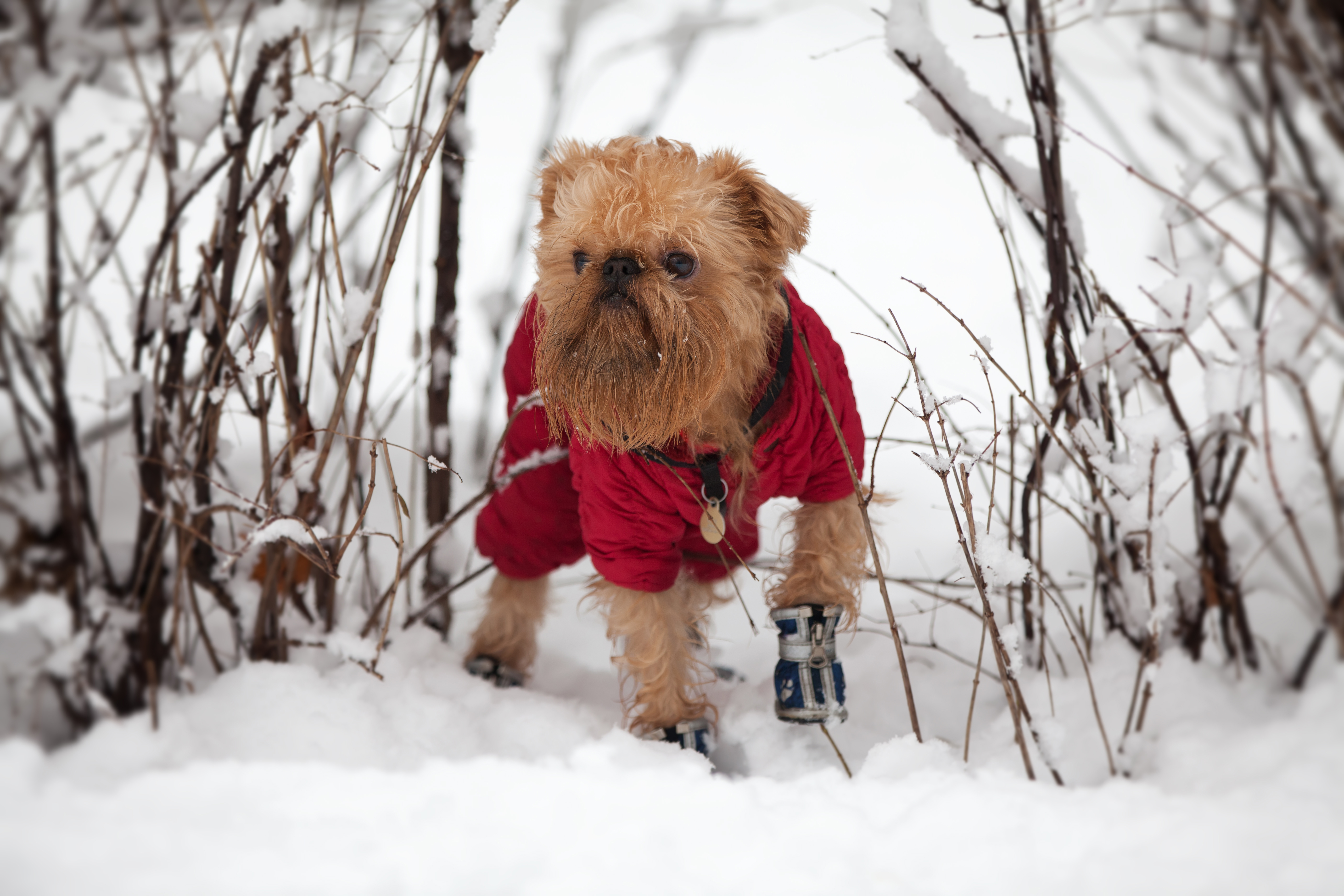
Do Dogs Really Need Boots in the Winter?
When winter begins and snow and ice begin to pile up outside, it’s tempting to curl up under a blanket and hide away from the cold. Unfortunately for pet owners, though, dogs still need to go outside to do their business and get some daily exercise in!
Around this time of year, you may notice pups on walks donning puffy winter jackets and rubber booties or socks. If your dog doesn’t have cold weather protection, you might start to wonder if you’re doing something wrong. However, not all dogs will have the same needs.
If you’re concerned about your dog’s paw pads while outside this winter, here are some things to help you determine whether your dog really needs winter boots.
Considerations for winter boots
When it comes to winter weather, all dogs are different. In the same way that you might be cold while your partner is perfectly fine in a light jacket, one dog might feel comfortable walking on ice while another will refuse to walk at all.
It’s a good idea to at least attempt to take your dog out in snowy conditions to see how they act. Observe your dog’s reaction and behavior and consider a few other factors in order to determine whether they really need winter boots or not.

- Pain or refusal to walk: If your dog goes outside and refuses to walk on surfaces covered with ice or snow, their paws might be feeling uncomfortable or painful. Your dog might also whimper, whine or yelp when walking on ice, which might indicate that they’re in pain. If your dog acts this way, getting them boots might help them be more comfortable outside.
- Hairy paws: If your dog has long hair and hairy paws, snow can accumulate around their toes more easily. As you walk, the snow might turn to ice or continue to build up, causing pain or even cutting the feet. Protecting their hairy paws with boots may help avoid this problem and let them walk more comfortably.
- Salt and de-icers: Think about the path you typically walk each day. If the sidewalk is covered in salt or chemical de-icers, they might cause problems for your dog’s paws. Both products have the potential to burn the paw pads, worsen dryness and even cause toxic poisoning. Booties help protect the paws from these substances.
- Dry, cracked paws: If your dog is suffering from dryness or cracking of the paw pads, walking on them in snow might be painful. Winter boots can both protect your pup’s paws from getting even drier and make it more comfortable for them to walk outside.
If you decide to get your dog winter boots to protect their paws, make sure you find a pair that fit well—not too tight and not too loose—and ones that are easy for them to walk in. Ill-fitting boots can make dogs averse to using winter booties entirely. The boots should have a good grip and be made from a water-resistant material so they don’t get soaking wet and freeze on your pet’s feet.

Alternatives to winter boots
Not all dogs will tolerate winter boots on their feet, nor will all dogs need winter boots to begin with. If winter boots aren’t the right choice for your pup, there are a few other things you can do to make walking outside safer and more comfortable.
- Paw care: Dryness and cracking of the paw pads is relatively common in dogs during the winter. Fortunately, you can take care of your pup’s paw pads on a daily basis using home remedies like coconut oil, shea butter or paw cream. Keeping your pup’s paws moisturized will help counteract the negative effects of dry winter air and road salt.
- Wipe paws off: After you take your pup for a walk, you can mitigate dryness and toxic poisoning risks by wiping your pup’s paws off with a damp towel. Make sure to remove any built-up snow and traces of salt or de-icers so your pup can roam comfortably in your home.
- Change your path: If your dog has trouble walking on ice, or salt and chemical de-icers coat your normal path, try changing your route to walk on softer snowy areas, instead. Or, consider signing up for an indoor dog gym where you can exercise your pup away from the hazards of the cold.
Winter boots can help snow- and ice-averse dogs to enjoy their time outside during the winter, but they aren’t always necessary. Make sure to observe any changes in your dog’s behavior and mobility when walking outside to ensure you’re taking the necessary steps to keep their paws safe and healthy.


